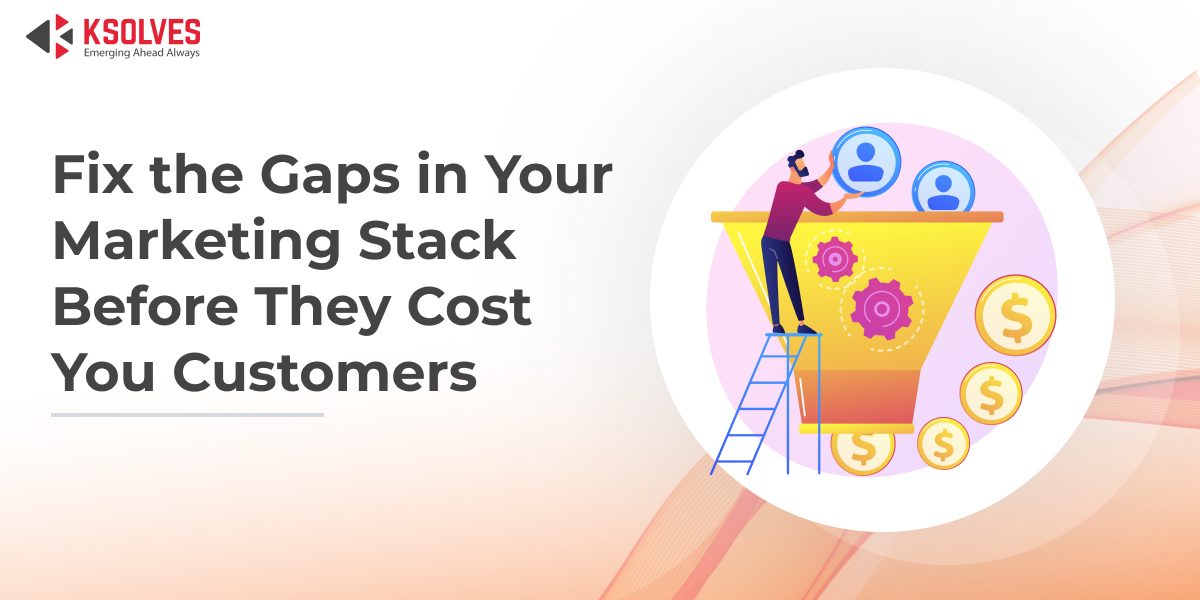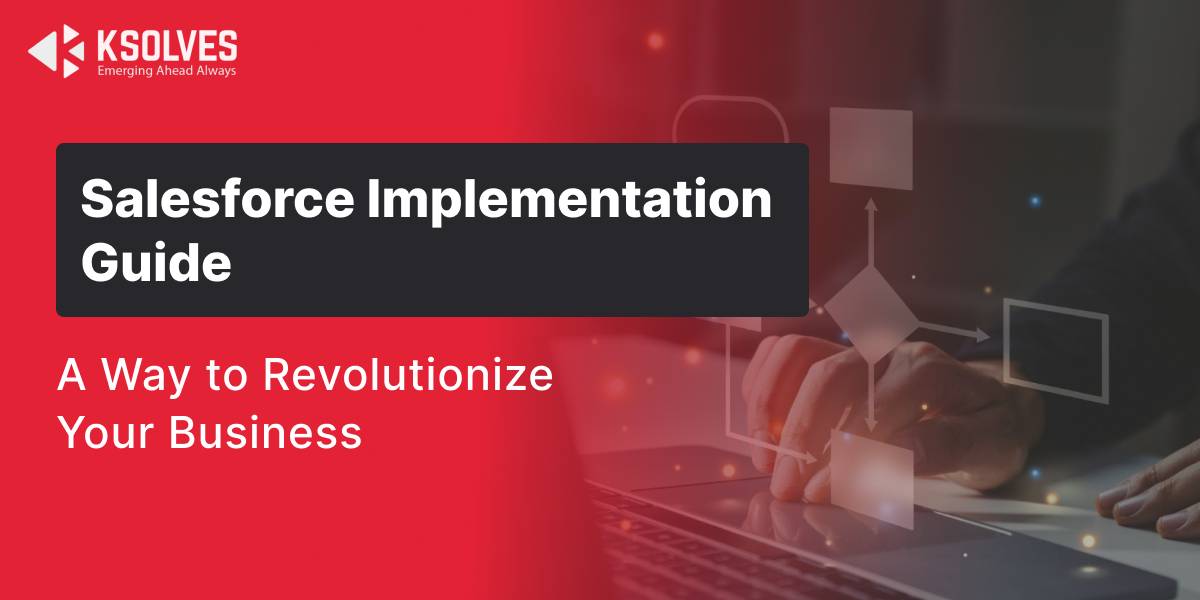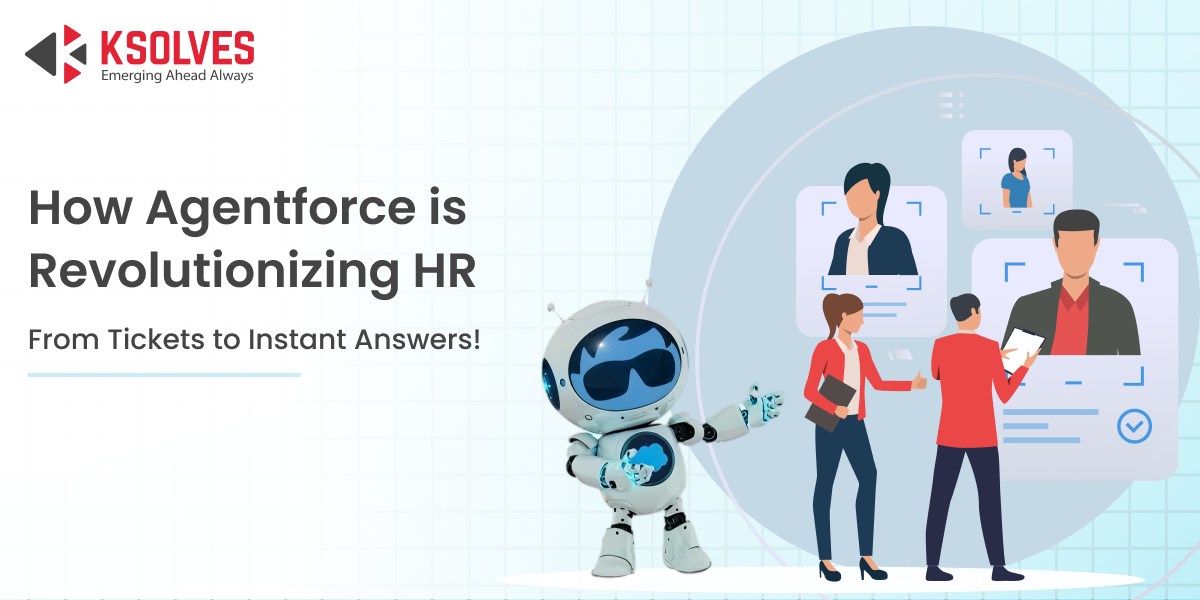Why Salesforce Marketing Cloud Is the Brain Your Marketing Stack Needs
Marketing Cloud
5 MIN READ
July 31, 2025
![]()

Imagine a busy restaurant where every cook is excellent at their job—one’s on the grill, another’s plating desserts, someone’s prepping ingredients. But there’s no head chef. No one’s calling orders, timing dishes, or checking if everything on the plate makes sense together.
The result? Each dish might be well-made, but meals go out cold, parts of the order get missed, and nothing feels coordinated. The kitchen’s working hard, but the experience falls apart at the table.
That’s your marketing stack without a unified system. Every tool is busy—email campaigns, social posts, analytics dashboards—but there’s no system connecting them. No shared timing, no real customer context, and no way to deliver a consistent experience.
What your team needs isn’t just better tools; they need a central brain. Something that connects the data, guides every action, and keeps your entire marketing stack working in sync.
Why Your Stack Feels Busy, But Not Smart
Your marketing team isn’t short on tools. The problem is that each one is doing its job in isolation. Data isn’t shared. Actions aren’t coordinated. Everyone’s working, but no one’s aligned.
Here’s what that looks like in practice:
You Can’t See the Full Customer Journey
Every tool holds a piece of the customer story, such as email clicks in one place, purchases in another, and support tickets in a third. But without a central system tying it all together, you’re left guessing who the customer really is. The result? Decisions based on fragments, not facts.
Personalization Feels Shallow
You’re adding a first name to an email and calling it personalized. But real personalization needs context, like which products someone looked at, which emails they opened, or what they left in their cart. Without that, your messages feel generic and disconnected, no matter how well-written they are.
Your Marketers are Doing Data Cleanup, Not Strategy
When platforms don’t talk to each other, someone has to fill the gaps. That means hours spent exporting spreadsheets, fixing duplicates, or reconciling conflicting metrics. Your marketing team ends up maintaining the system instead of building campaigns that drive growth.
Your Attribution Model is a Guessing Game
Which campaign drove the conversion? Which channel mattered most? If your tools aren’t connected, you can’t track the full path to purchase. You’re left with assumptions, not insights, and that means wasted spend and misinformed decisions.
Your Campaigns Can’t React Fast Enough
Customer behavior changes fast, but disconnected tools can’t keep up. Someone might view a product, abandon their cart, and click an ad all in the same hour, but your stack responds days later, if at all. Without a central brain to interpret behavior as it happens, your marketing stays one step behind.
What a ‘Central Nervous System’ Really Means (And Why You Don’t Have One Yet)
Most marketing stacks today are connected on paper, but not in function. APIs are stitched together, data syncs happen overnight, and campaign logic lives in separate tools. It feels like integration, but it doesn’t think like one system.
What your stack actually needs is a central nervous system, and not just to connect tools, but to coordinate them. It should take in signals from across your channels, interpret what they mean, and trigger the right actions instantly.
Here’s what that looks like when it’s done right:
Unified Data Model
In most stacks, customer data is scattered. Email clicks sit in your email tool, purchases live in your ecommerce platform, and support tickets are stored elsewhere. Each platform sees only part of the picture.
A unified data model brings all of this together. It connects browsing history, transactions, email engagement, and support activity to a single customer profile.
No duplicates. No mismatched records. Just one accurate view of the customer that’s consistent across every channel.
Real-Time Orchestration
Most systems wait for scheduled updates before taking action. That delay means missed opportunities.
A real-time system works differently. It listens for customer behavior as it happens. If someone opens an email, visits a product page, or abandons their cart, the system can trigger the next step right away.
No delays. No lag. Just timely, relevant responses that match the customer’s moment
One Customer View
In disconnected systems, it’s common to see duplicate records, missing details, or conflicting data. That leads to poor targeting and inconsistent messaging.
A unified customer view solves this. Every team works from the same data—one profile, one engagement history, one set of behavior signals. It keeps communication relevant and prevents opportunities from slipping through the cracks.
Sales, Service, and Marketing Working in Sync
When your systems are disconnected, teams work in isolation. Marketing sends campaigns without knowing what sales are doing. Support handles tickets without context.
A central brain changes that. Sales can see which emails a lead opened. Support can check what promotions a customer received. Marketing can adjust based on feedback from the front lines. Everyone works with the same information, and the customer gets a consistent experience.
So What’s the Fix? This is Where Salesforce Marketing Cloud Steps in
In today’s fragmented martech landscape, many businesses struggle to make their tools work together. Data lives in silos, campaigns lack cohesion, and teams are often working with incomplete customer views. That’s where Salesforce Marketing Cloud becomes a game-changer.
This platform doesn’t just sit on top of your tech stack—it acts as the central brain, intelligently connecting data, streamlining actions, and ensuring your marketing ecosystem functions as a unified whole.
Here’s how Salesforce Marketing Cloud solves the disconnect and delivers seamless, intelligent, and scalable marketing:
1. A Stack That Knows What It Knows
One of the biggest challenges in marketing today is managing scattered customer data across multiple systems. Salesforce Marketing Cloud addresses this head-on by organizing and connecting your data into a single, comprehensive view of the customer.
Using features like Data Extensions and Contact Builder, it ties every customer interaction, such as email clicks, purchases, app usage, and support tickets, into a unified customer profile. No matter where or how a customer interacts with your brand, their data is captured and stored in one place.
Even better, because Marketing Cloud is natively integrated with Salesforce CRM, marketing, sales, and service teams all access the same up-to-date record. That means:
- No more data syncing issues
- No conflicting customer information
- No outdated contact records
Instead, your teams get a reliable, 360-degree view of every customer, which empowers better communication and more personalized experiences across the board.
2. Customer Journeys That Don’t Miss a Beat
While many platforms offer basic marketing automation, Salesforce Marketing Cloud takes it to the next level with Journey Builder. It’s a great tool designed to create adaptive, personalized customer journeys at scale.
Whether you’re onboarding a new customer, re-engaging inactive users, or promoting a new product, Journey Builder ensures the entire experience is:
- Dynamic: Responds in real time to user behavior (e.g., someone opens an email, clicks a product, or abandons a cart).
- Multi-Channel: Communicates across email, SMS, push notifications, social ads, and more, all from one interface.
- Condition-Based: Adjusts the path based on triggers or rules (e.g., sending a reminder if a purchase wasn’t completed).
This means your campaigns don’t just go out on a schedule; they adapt to each customer’s actions and preferences, helping you stay relevant, timely, and connected at every stage of the funnel.
3. Smarter Than Just Automated
Traditional marketing automation is rule-based: “If a customer does X, then send Y.” But Salesforce Marketing Cloud introduces true intelligence through Salesforce Einstein, its AI-powered engine.
Einstein goes beyond automation by applying machine learning to your customer data. It can:
- Predict engagement: Identify which users are most likely to open, click, or convert.
- Optimize timing: Determine the best time to send each message for maximum engagement.
- Personalize content: Suggest or dynamically generate content based on past behavior and preferences.
In other words, your campaigns learn and improve over time. You’re not just automating actions; you’re delivering smarter, data-driven experiences that resonate.
4. Built for What’s Next, Not Just What’s Now
As your business grows, your marketing needs become more complex. Fortunately, Salesforce Marketing Cloud is built to scale, without breaking down.
Whether you’re sending a few thousand messages or millions, syncing with multiple data platforms, or running campaigns across global markets, the platform handles it all with enterprise-grade reliability.
Key scalability and flexibility features include:
- Robust infrastructure that supports high-volume sends and large datasets
- Compliance and security standards suitable for regulated industries like healthcare and finance
- Open APIs and integration tools that connect with your existing ecosystem (e.g., web apps, analytics tools, ad platforms)
This means you don’t need to overhaul your current systems. Instead, Marketing Cloud fits in smoothly, amplifying your existing investments while preparing your business for future growth.
Let’s Talk ROI and Why Smart Marketing Pays for Itself
Salesforce Marketing Cloud isn’t just a cost—it’s a shift in how your marketing team works. When campaigns are triggered by real behavior, when data is always up to date, and when every channel is connected, the results show up fast.
Here’s what that impact looks like:
Increase in Lifetime Value
When marketing speaks to individual needs, customers stick around longer. With personalized journeys and relevant content, you’re closing a sale along with building a relationship. Over time, that means more repeat purchases, stronger retention, and a higher lifetime value for every customer you bring in.
Higher Conversions from Smarter Journeys
Automations are only as good as the data behind them. With Salesforce Marketing Cloud, you’re reacting in real time to what a customer is doing—clicking, browsing, leaving, returning. That allows your messages to land when they matter most. The result? More opens, more clicks, and more conversions without increasing your spend.
Fewer Hours Wasted on Manual Work
Without integration, your team is buried in spreadsheets, reconciling reports, and managing tools manually. Marketing Cloud takes that off their plate. Data flows automatically. Journeys update based on behavior. Reports are pulled from one place. That time saved gets reinvested into strategy, testing, and creative work.
Real Customer Loyalty Driven by Real Personalization
Generic emails don’t build trust. When you can tailor content to fit exactly where a customer is in their journey—what they’ve bought, what they’ve browsed, and how they’ve interacted—they feel understood. That relevance drives long-term loyalty, not just one-time clicks.
Conclusion: Shift From Patchwork to Orchestration
Most marketing teams don’t have a tool problem—they have a connection problem. The platforms are in place, but they operate in silos. Data is scattered. Campaigns are disconnected. Teams are busy, but the results feel inconsistent.
The fix isn’t adding more tools. It’s building a system that brings everything together—a central brain that aligns your stack, responds in real time, and puts the customer at the center of every action.
That’s the difference between patching together a marketing process and orchestrating one that actually works.
And this shift isn’t just about buying software—it’s about making smart investments that drive long-term value. Salesforce Marketing Cloud offers the foundation. But to get it right, you need a partner who understands both the technology and the outcomes you’re aiming for.
As a certified Salesforce partner, Ksolves helps in Salesforce Marketing Cloud implementation the right way—from data strategy and architecture to journey design, automation, and integration. Whether you’re starting fresh or replacing legacy tools, we’ll help you build a system that’s fast, future-ready, and fully aligned with your goals.
No more duct-taped workflows. No more guessing.
Just smarter marketing with a system that finally works as one. So, why wait? Contact us today!
![]()







Author
Share with